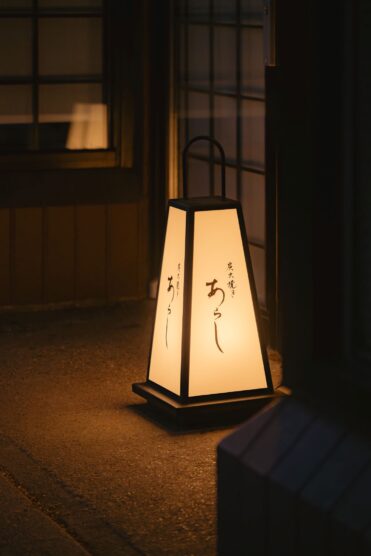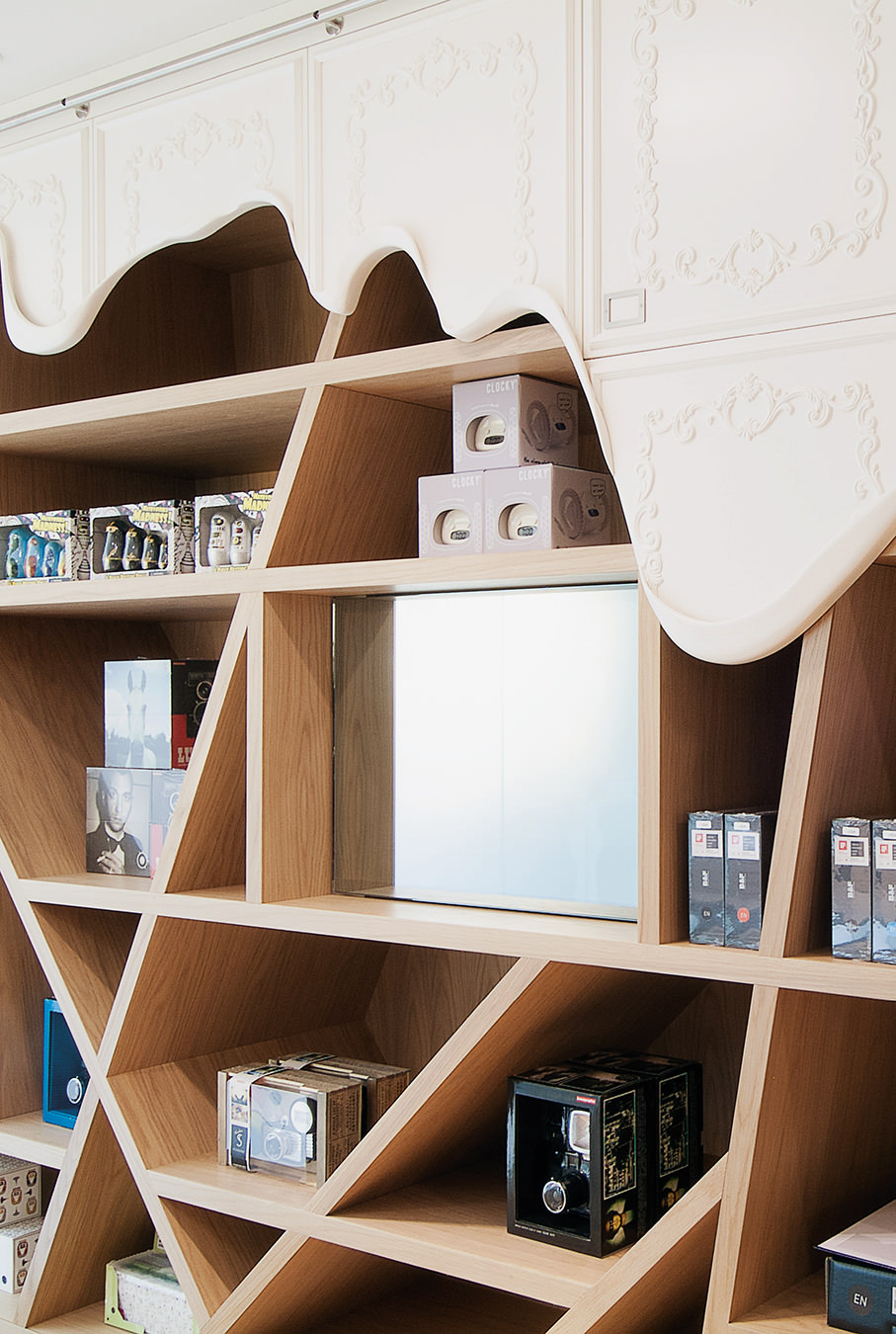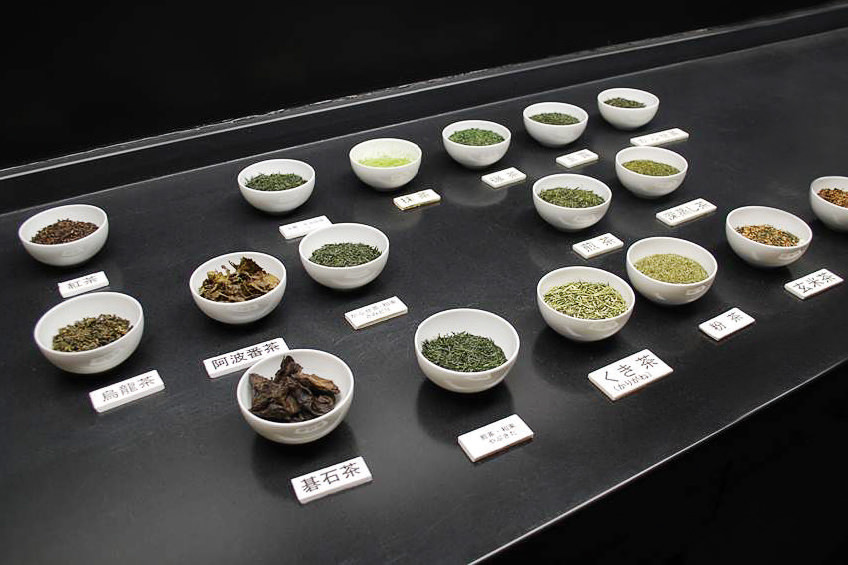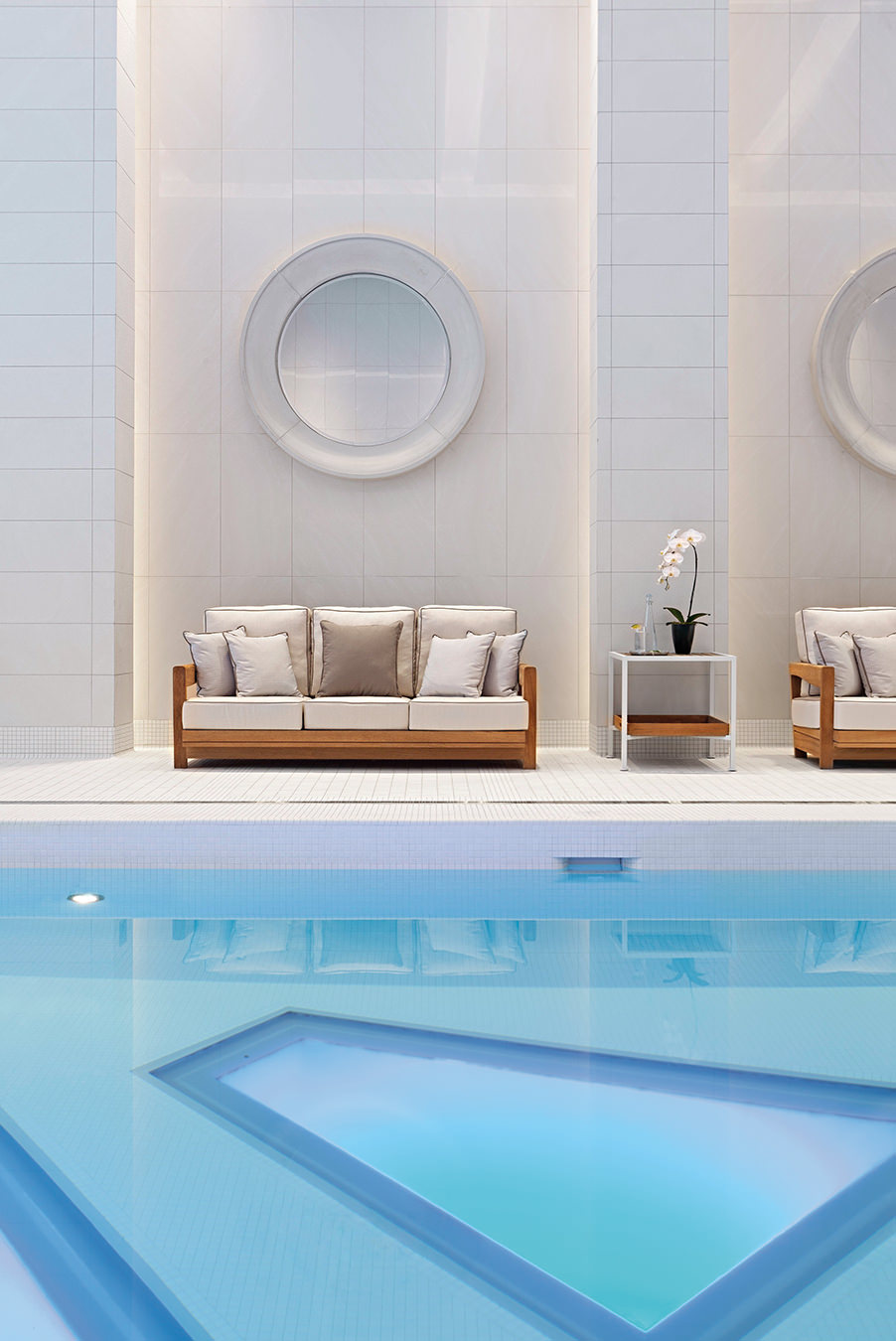Step Inside Sumibiyaki Arashi, Vancouver’s New Yakitori Omakase Experience
A new restaurant from chef Pete Ho.
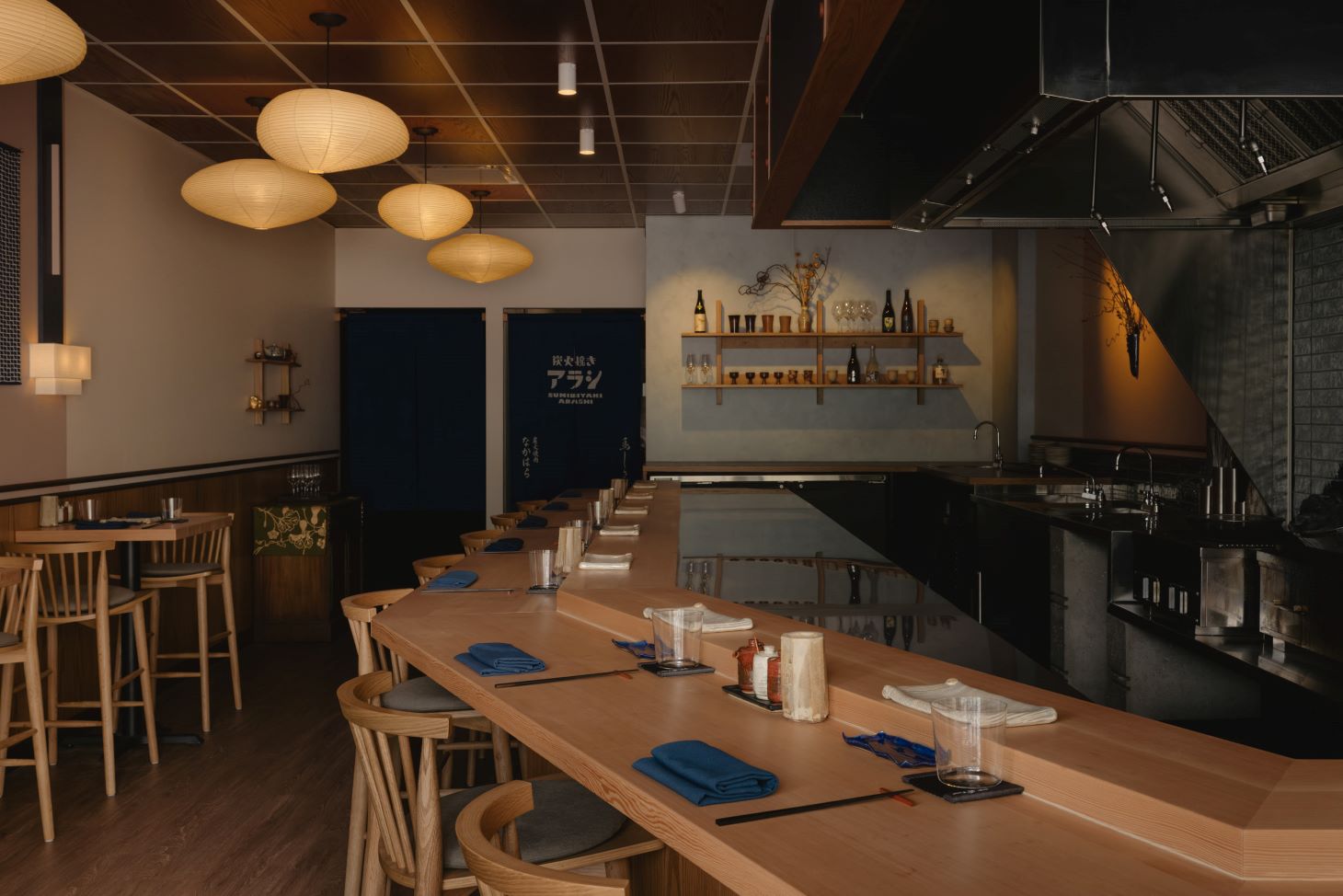
Despite its location on busy East Broadway in Vancouver’s Mount Pleasant, the newly opened Sumibiyaki Arashi evokes a sense of discovery. Designed by Studio Roslyn with owner-chef Peter Ho, the intimate 14-seat restaurant highlights the beauty and precision of the yakitori-driven omakase experience.
“When you first walk in, the feeling you get is a sense of true hospitality,” says Kate Snyder, the co-founder and creative director at Studio Roslyn. “It’s warm and familiar, but at the same time there’s a bunch of small and subtle details you start noticing as you journey through the space, which is exactly what chef Ho offers with his omakase experience.”
Sumibiyaki Arashi offers a set omakase menu that features yakitori—skewered and charcoal-grilled chicken—alongside seasonal fish and vegetable dishes. The restaurant is the culmination of Ho’s extensive training in yakitori, including working at Michelin-starred Nihonryori RyuGin in Tokyo, as well as training under master chef Yoshiteru Ikegawa of Torishiki, Tokyo’s legendary yakitori restaurant.
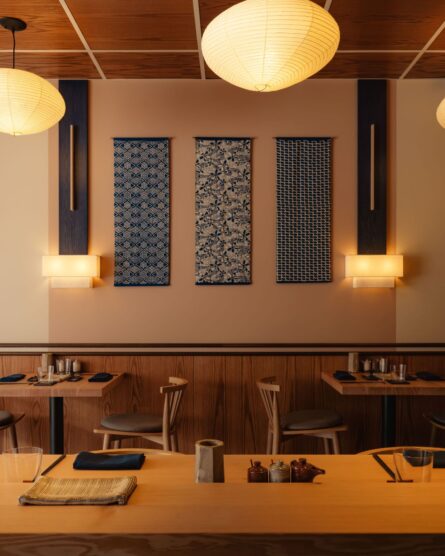
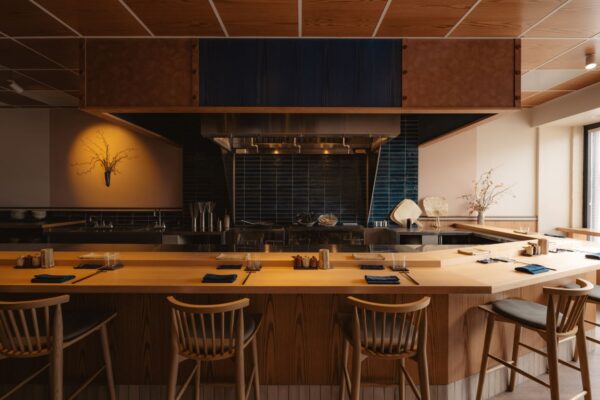
Entering Sumibiyaki Arashi, guests are greeted by a handcrafted Douglas fir bar, which stands out against the kitchen’s glossy indigo tiles. Warm wood tones and deep indigo hues make up most of the palette, with custom-stained red oak on the ceilings and walls, and indigo accents throughout.
“In the space, there’s an intentional exercise of constraint,” Snyder says. “We pushed it a bit with some of the colour palette and styling details like the florals to add a sense of playfulness, to create something subtle yet interesting.” Each detail of the experience is intended to reflect Ho’s respect for tradition, plus his more contemporary sensibilities.
The interiors are lit by Noguchi-designed Akari pendants and geometric sconces that cast a soft glow on the textural lime-washed walls. Adding greater vibrancy and depth, a carmine red hallway extends out of the dining space. “I went down a very fun rabbit hole of learning about these traditional dyes like indigo blue and carmine red,” Snyder explains. “For the hallway, we matched it as close as possible with a traditional Japanese carmine red.”
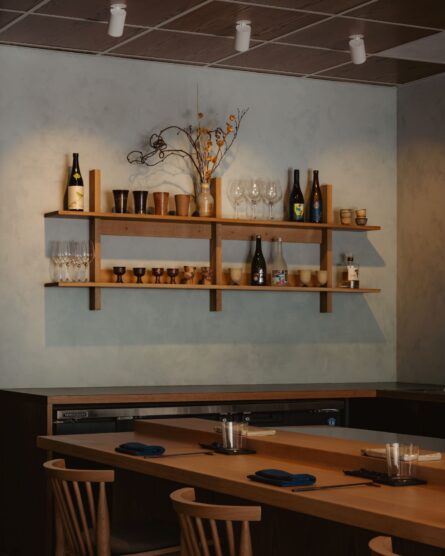
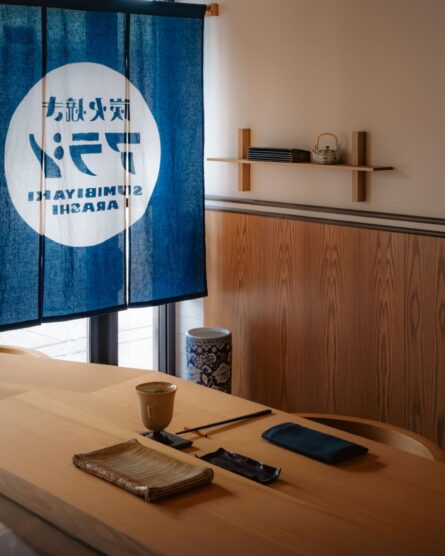
The word sumibiyaki means “charcoal grilling,” and naturally, the grill is the centrepoint of the restaurant, with the kitchen designed around it. Sumibiyaki Arashi features a custom-built Teruhime yakitori grill that burns binchotan charcoal. Ho sources this high-quality, smokeless charcoal directly from Wakayama, where it originates.
Studio Roslyn and chef Ho have created a space where the interiors parallel the beauty and precision of the omakase journey, such as the table settings that feature custom ceramic pieces from Koutoku Yano of Shikikado Ceramic Studio in Tokyo, or the noran curtain at the entrance, which was custom-designed for Sumibiyaki Arashi and hand-dyed indigo in Tokyo.
“There’s a real thoughtfulness behind every single detail in Sumibiyaki Arashi,” Snyder explains. “For me, that’s a huge success of the space. As you experience the food and the space, you’re struck by how everything just comes together.”
